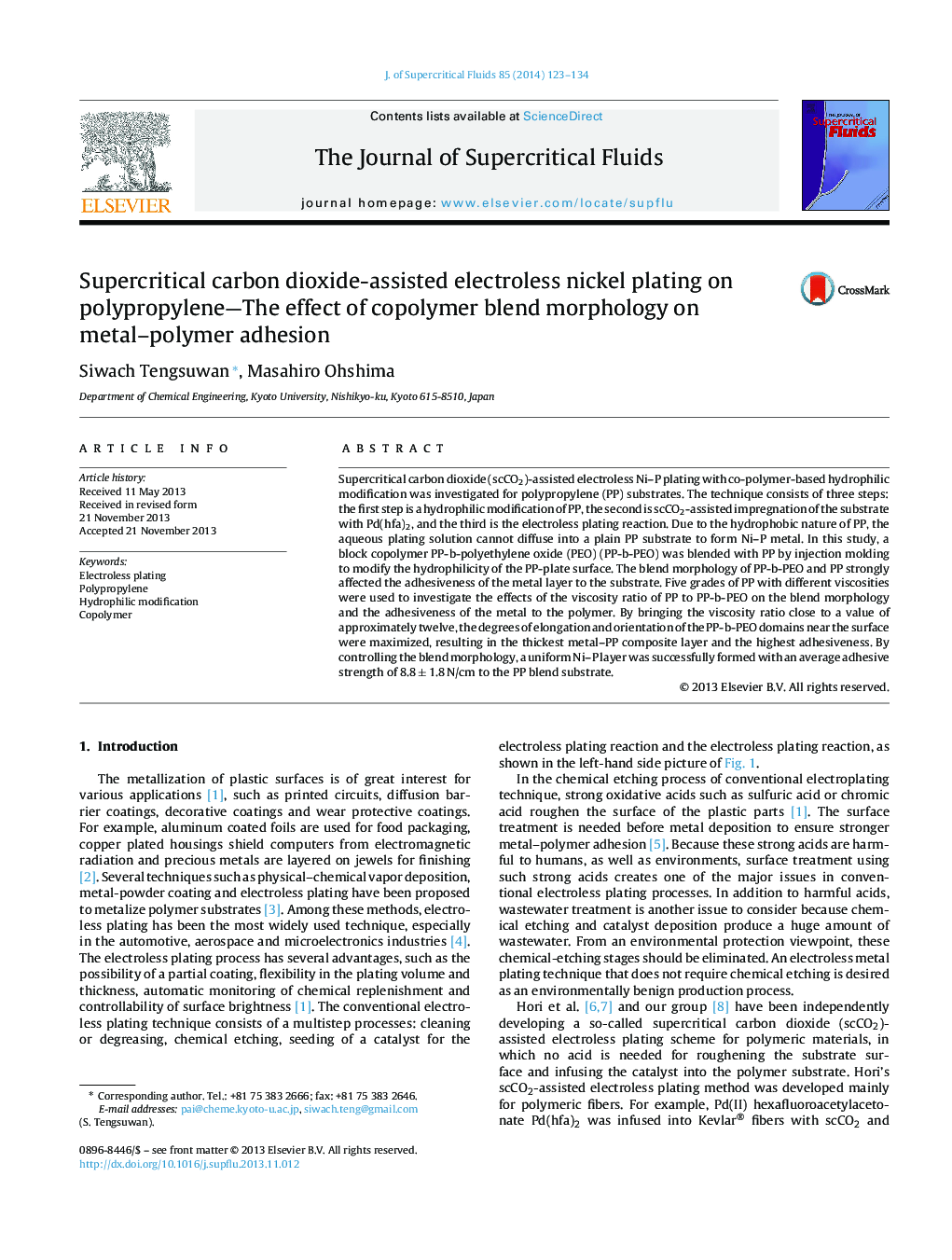| کد مقاله | کد نشریه | سال انتشار | مقاله انگلیسی | نسخه تمام متن |
|---|---|---|---|---|
| 230701 | 1427392 | 2014 | 12 صفحه PDF | دانلود رایگان |
• ScCO2-assisted electroless Ni–P plating on PP was successfully performed by hydrophilic modification with a copolymer.
• Adhesiveness of the metal layer to the polymer substrate was dominated by the thickness of the metal–polymer composite layer.
• The blend morphology between the copolymer and PP near the surface was the most important factor for determining the thickness of the composite layer.
• The blend morphology was determined by the viscosity ratio of PP to copolymer and mold temperature.
Supercritical carbon dioxide (scCO2)-assisted electroless Ni–P plating with co-polymer-based hydrophilic modification was investigated for polypropylene (PP) substrates. The technique consists of three steps: the first step is a hydrophilic modification of PP, the second is scCO2-assisted impregnation of the substrate with Pd(hfa)2, and the third is the electroless plating reaction. Due to the hydrophobic nature of PP, the aqueous plating solution cannot diffuse into a plain PP substrate to form Ni–P metal. In this study, a block copolymer PP-b-polyethylene oxide (PEO) (PP-b-PEO) was blended with PP by injection molding to modify the hydrophilicity of the PP-plate surface. The blend morphology of PP-b-PEO and PP strongly affected the adhesiveness of the metal layer to the substrate. Five grades of PP with different viscosities were used to investigate the effects of the viscosity ratio of PP to PP-b-PEO on the blend morphology and the adhesiveness of the metal to the polymer. By bringing the viscosity ratio close to a value of approximately twelve, the degrees of elongation and orientation of the PP-b-PEO domains near the surface were maximized, resulting in the thickest metal–PP composite layer and the highest adhesiveness. By controlling the blend morphology, a uniform Ni–P layer was successfully formed with an average adhesive strength of 8.8 ± 1.8 N/cm to the PP blend substrate.
Figure optionsDownload as PowerPoint slide
Journal: The Journal of Supercritical Fluids - Volume 85, January 2014, Pages 123–134
